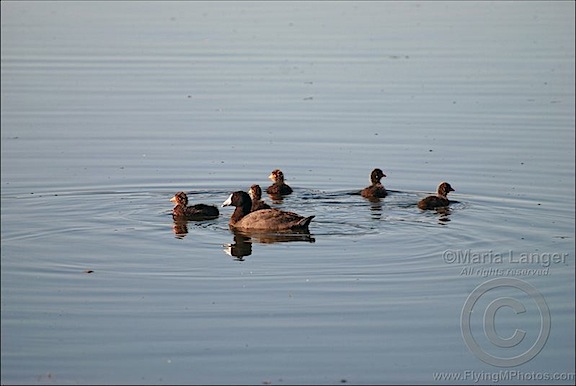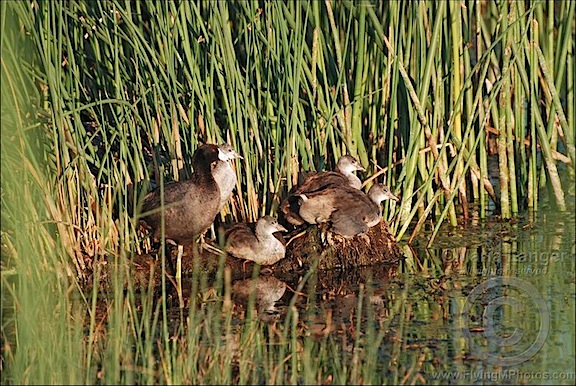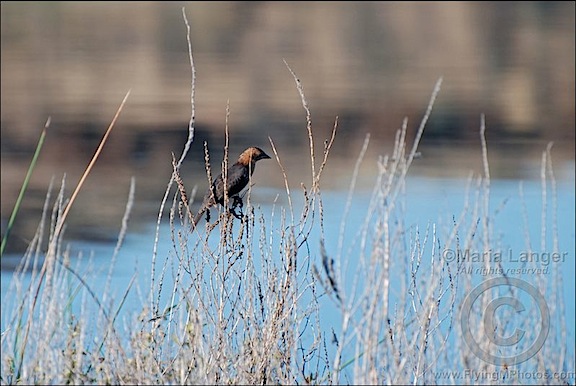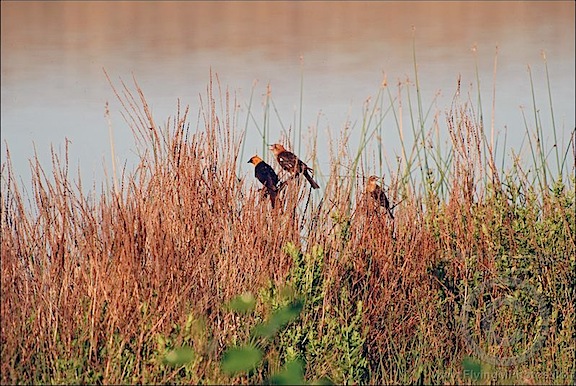Probably some of the toughest flying I’ll ever do.
On Friday, I finished my fourth straight day of flying for a wildlife survey job. It was…well…exhausting.

Eagles live in places like this.
This work is, by far, some of the trickiest and most dangerous flying I do. In this particular survey, we were looking for raptors — birds of prey. We were interested in nests. Nests are generally on high, rocky crags, normally on cliff faces. In order to see them, you need to be close. So I’m basically flying 25 to 50 feet off the side of cliffs, slow enough for the observers to look for bunches of twigs crammed into a rock shelf.
Cliff faces are not all at the same altitude. Some are high, some are low. Some are high and low at the same rock formation, requiring multiple passes at various altitudes. The high ones might be a few hundred or even thousand feet off the desert floor. Or they might be adjacent to a ridge or inside a canyon. Or inside a box canyon. The low ones could be 50 feet off the desert floor.
If the observers see a nest, I need to stop and hover so they can get a good look at it. They mark a location on a GPS and take photos. I have to keep the helicopter relatively stable in an out-of-ground effect hover.
We start with full fuel and fly until we need more. On Tuesday, one leg ran 3.4 hours. That’s 3.4 hours of constant, intense flying. I flew a total of 31.6 hours over the course of four days.
That’s an overview of what it’s all about. For my fellow helicopter pilots, I want to go into some detail. Read on.
Operating Inside the Shaded Area of the H-V Diagram
 I wrote about the “deadman’s curve” about two years ago. If you’re a pilot, you should be familiar with it, perhaps by its less sensational name, “The Height-Velocity Diagram.” It indicates the airspeed/altitude combinations for which it is likely impossible to perform a successful autorotation in the event of an engine failure.
I wrote about the “deadman’s curve” about two years ago. If you’re a pilot, you should be familiar with it, perhaps by its less sensational name, “The Height-Velocity Diagram.” It indicates the airspeed/altitude combinations for which it is likely impossible to perform a successful autorotation in the event of an engine failure.
In other words, if you are operating in the shaded area of the diagram and have an engine failure, you’re probably going to crash.
I operate in the shaded area when I do cherry drying. After all, I’m about 20-30 feet off the ground, flying at about 5 to 10 knots. Of course, when I dry cherries, I do have all those soft, cushy trees under me. An engine failure means a totaled helicopter and some damaged trees, but I’d likely live to tell about it.
Not so with this flying. I’m operating all over that shaded area. Under me is rock — all kinds of rock. Boulders, gravel, sandstone, basalt — more kinds of rock than I know. It all has one thing in common: it’s very hard. It will not cushion a fall. Worse yet, most of it is on hillsides or ridges or equally uneven ground. So not only would we hit the hard ground, but we’d likely tumble. It would be very ugly.
I try not to think about it.
Settling with Power
Probably the biggest challenge is avoiding settling with power in out of ground effect (OGE) hovers. We were operating at altitudes ranging from 2,000 to 7,500 feet MSL, at temperatures ranging from 12°C to 25°C. With full fuel — which I had to take each time we refueled just so we’d have a full three hours of flight time between refuelings — we were within 100 pounds of max gross weight. (There were three of us on board.)
Settling with power, which is also referred to as vortex ring state, occurs when the helicopter descends into its own downwash. It’s an aerodynamic condition caused by enlarged rotor tip vortices. (You can read more about it on pages 11-5 through 11-6 of the Rotorcraft Flying Handbook.) Recovery is usually pretty easy: just get some lateral motion to break the helicopter out of the vertical descent. Unfortunately, you might lose quite a bit of altitude before you can recover. So while recovery from 2,000 or 3,000 feet AGL — where flight schools normally practice — isn’t a big deal, recovery from 100 feet AGL probably isn’t going to be successful. The key is to avoid settling with power — to realize that you’re descending before your descent slams you into the ground.
Settling with power, by the way, is the biggest danger to inexperienced pilots or pilots operating underpowered aircraft during aerial photo missions. It’s the main reason Robinson issued Safety Notice SN-34, which recommends a minimum of 500 hours PIC time for all pilots conducting aerial photography missions. I discussed it as it related to an R44 accident here. It’s also the reason I believe anyone doing serious aerial photography in an R22 should have his head examined.
 The OGE Hover chart for my Raven II shows the expected performance in zero wind. Fortunately (and unfortunately) we did not usually have zero wind. The wind was blowing at sustained speeds up to 15 knots with gusts up to 25 knots. It was also blowing from different directions, depending on where we were flying — did I mention that we covered hundreds of square miles of land during the four-day period? So the challenge was knowing where the wind was coming from, trying to point into it whenever possible, and holding a steady hover while the observers did their thing.
The OGE Hover chart for my Raven II shows the expected performance in zero wind. Fortunately (and unfortunately) we did not usually have zero wind. The wind was blowing at sustained speeds up to 15 knots with gusts up to 25 knots. It was also blowing from different directions, depending on where we were flying — did I mention that we covered hundreds of square miles of land during the four-day period? So the challenge was knowing where the wind was coming from, trying to point into it whenever possible, and holding a steady hover while the observers did their thing.
Of course, sometimes it just wasn’t possible to point into the wind while maintaining a hover. The worse was when the wind was behind us, gusting, trying to blow the tail one way or the other. Then I’d be dancing on the pedals to keep us straight. Once in a while, I’d run out of left pedal when I was a lot closer to a cliff face than I wanted to be. Or sometimes — especially on the last day when the wind was really howling — the wind blowing over the hills and rock faces around us was setting up some nasty pockets of turbulence that offered no wind consistency at all. I’d be working the controls, keeping us as steady as possible and realize that I just couldn’t hold the hover. I’d apologize to my clients as I veered away from the cliff face, gathering speed as I descended. Then I’d come around from the other direction and, if I were lucky, the wind and turbulence would let me get the 30 to 60 second hover I needed. Or not. And then I’d have to come around again.

In this photo from Wednesday’s flight, my observers are examining the rock face on the left and I have a perfect escape route toward the desert floor on my right.
The real key was to make sure there was always an “escape route” — a place to go if I began to settle. I preferred having that escape route on my right, where it would be easy to peel away with a clear view of where I was going. I also preferred having at least a few hundred feet of empty space beneath us in that direction. But sometimes I had to operate in a tight area between two cliff faces or beside a cliff with a ridge beneath us or beside a cliff only 50 or 100 feet off the desert floor. There was no room for error.

By contrast, in this area, I was not only flying directly into the sun, but there’s a ridge line beneath me and mountains to my left and ahead of me. The only escape route is down to my right, after I’ve cleared the ridge. (The adrenaline-pumping spot I refer to in the narrative was much tighter than this.)
I got into a tight spot once with a cliff face on my left and a ridge line only 50 or so feet beneath us on my right. The only escape route was behind me, back between two arms of the mountain. The wind was wicked weird in that spot, blowing from the other side of the cliff and I was dancing hard on the pedals to keep us pointed the way we needed to point. When we started to settle, for a moment, the helicopter would not go in the direction I wanted it to. We were descending right into the ridge. I felt a small rush of adrenaline just before we finally started to move where I wanted to go. It was probably the closest I came to a mishap during the entire job.
Obstacles, Birds, and Traffic

This shot gives a good idea of how close we came to cliff walls; mind you, this was shot with a very wide angle lens. The tower in the distance had 9 or 12 unmarked guy wires.
Did I mention the obstacles? Of course I mentioned the cliff faces and ridge lines — those were par for the course. But there were also a few towers, including one nasty tall one with guy wires.
And then there were the birds. In some cases, the eagles we saw would be perched on a rock, watching us fly by. We didn’t phase them in the least, even when we got close enough to look them in the eye. Other times they were flying nearby, unafraid of us. One came dangerously close to my main rotor disc as we flew past. Another decided that we were invading his territory and did what my clients said was a display to defend it: he flew straight up into the air, above our altitude, then tucked his wings under and dove straight down past us. This bird did this at least six times, giving us a show that would have made great footage for Animal Planet. As my clients said, “That’s one pissed off bird.”
Traffic wasn’t a big deal. We were operating near a tour helicopter area and, because of that, I had to monitor the tour traffic frequency. We were seldom high enough to be in their path and, when we were, we were hovering beside mountains where they shouldn’t be with passengers. I suspect they might have seen us poking around the mountains — a tiny red dot on the desert landscape far below — but I kept quiet and just listened, trying to figure out where their reporting points were. I wonder if they made the connection when they saw us back at the airport during our refueling stops.
My passengers got a real kick out of seeing them fly across the desert above us, one after the other, as if they were playing follow the leader.
Fatigue
I’ll be honest — since my days flying at the Grand Canyon, I’ve seldom flown more than 5 or 6 hours in a day. And just about all my previous long days of flying have been either for tours or point-to-point cross-country trips — easy stuff. For this job, I was flying 8 or more hours a day, starting not long after dawn.

Long stretches of high-speed flight over open desert was time for rest.
To be fair, some days had a considerable amount of point-to-point flying. For example, on the last day, I had to fly to New Mexico in the morning and return to Arizona in the afternoon — those two cross-country flights were just over 2 hours each. Other times, we needed to fly from the refueling point to the survey area or speed across the survey area from one likely habitat to another. I considered that flying my “rest” time.
The actual survey flying was intense, requiring both hands and feet to be firmly on the controls, making constant inputs. And although I know I can fly the helicopter with just two fingers on the cyclic and collective, it’s not easy to do when sudden gusts of wind or turbulence are trying to yank to cyclic out of your hand. In other words, I applied my “cyclic death grip” — a surefire way to tense up the rest of my body for the duration.
Compounding matters is that with both hands busy, it was impossible to grab a sip of water. I had to wait until we’d finished an area and were cruising to the next to get a drink. Sometimes that would be 30 minutes or more. The whole time, we’re flying in the desert. When facing into the sun, the cockpit got hot. Not brutally hot, like it would be in the summer, but hot enough to sweat. The helicopter’s vents were wide open, but with airspeeds typically less than 30 knots, there wasn’t much air coming in. Dehydration was a real danger.
Each flight, I did my best to maximize fight time between refuelings. That meant knowing exactly when to turn back. On our first day, when we were relatively close to the airport, the low fuel light came on just as we were coming in over the airport for landing. I managed to get 3.4 hours of continuous flight time on full tanks.
But as time went on, my fatigue started to wear me down. On the second day, I told my clients I wanted to go in for fuel when we could have easily flown for another 20 or 30 minutes on the fuel we had. I needed a break.
That pretty much set up a pattern for the rest of the job. We’d start very early in the morning and do two flights of about 3 hours each, then take a break for lunch. After lunch, I got my second wind and was good for the rest of the day.
Experience that Counts
Overall, the experience was very good for me as a pilot. It required me to stay in tune with my helicopter and make it do exactly what I needed it to. It built flying skills and gave me plenty of practice using the skills I already had.
As I was doing this work and watching the tour pilots fly by overhead, it struck me how unfair the experience numbers game is. Any helicopter pilot can do what those guys do — fly from one airport or landing zone to another, high over open desert on a predetermined route on a beautiful spring day. They’re taxi drivers of the sky, shuttling people from one place to another. They’re not facing the Deadman’s Curve or concerns about settling with power. They’re not dancing on the pedals to maintain heading in a hover, fighting turbulence, keeping an escape route in sight at all times. There are no obstacles, few birds, and all the traffic knows exactly where you are. There’s no need to engage the cyclic death grip; two fingers give you all the pressure you need to stay in control.
Yet because these guys are flying turbine helicopters on their tour routes, their flight time is worth more than mine. To them, I’m just a “Robbie ranger,” not even worth treating with courtesy when I fly into “their” airspace. In their minds, they’re hot stuff, turbine helicopter pilots, tomorrow’s great aviators. They haven’t got a clue about real helicopter flying.
Worse yet, their turbine flight time is more valuable to employers than my time. I can fly circles around these guys in my little piston helicopter, but because they fly turbines, they’ll get jobs I can’t qualify for because I don’t have those turbine hours. It’s not fair, but it’s a fact of life — one I have to deal with if I ever do decide to get a job working for someone else. Until that day comes, however, I’ll be satisfied building real flying skills in the aircraft I fly.
And hopefully, by sharing what I learn here, some of those guys will get an idea of what they’re missing.
 Telephoto lens. I have a Nikon ED AF-S Nikkor 70-300mm 1:4.5-5.6 G VR lens that I use for just about all of my bird photography. Again, not a professional lens and, as some have argued, not even a long enough lens for serious wildlife photography. But hell, this is a hobby. You have to draw the line somewhere. What makes this lens especially useful is the vibration reduction (VR) feature, which kicks in as necessary when turned on.
Telephoto lens. I have a Nikon ED AF-S Nikkor 70-300mm 1:4.5-5.6 G VR lens that I use for just about all of my bird photography. Again, not a professional lens and, as some have argued, not even a long enough lens for serious wildlife photography. But hell, this is a hobby. You have to draw the line somewhere. What makes this lens especially useful is the vibration reduction (VR) feature, which kicks in as necessary when turned on.

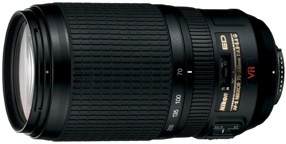 Telephoto lens. I have a Nikon ED AF-S Nikkor 70-300mm 1:4.5-5.6 G VR lens that I use for just about all of my bird photography. Again, not a professional lens and, as some have argued, not even a long enough lens for serious wildlife photography. But hell, this is a hobby. You have to draw the line somewhere. What makes this lens especially useful is the vibration reduction (VR) feature, which kicks in as necessary when turned on.
Telephoto lens. I have a Nikon ED AF-S Nikkor 70-300mm 1:4.5-5.6 G VR lens that I use for just about all of my bird photography. Again, not a professional lens and, as some have argued, not even a long enough lens for serious wildlife photography. But hell, this is a hobby. You have to draw the line somewhere. What makes this lens especially useful is the vibration reduction (VR) feature, which kicks in as necessary when turned on. The folks at Lynda.com put authors up in an area hotel. The first few times I came out here, they put me in a Holiday Inn Express near Ventura Harbor. I really liked my room, which was on the first floor with big windows overlooking the marina. There was a lot of life there — people walking, birds flying, boats, dogs, joggers.
The folks at Lynda.com put authors up in an area hotel. The first few times I came out here, they put me in a Holiday Inn Express near Ventura Harbor. I really liked my room, which was on the first floor with big windows overlooking the marina. There was a lot of life there — people walking, birds flying, boats, dogs, joggers. Which brings me to the pelicans.
Which brings me to the pelicans. In other words, I wasn’t properly equipped.
In other words, I wasn’t properly equipped.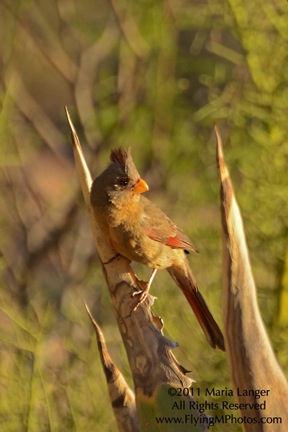


 The photos on this page are of birds in the cardinal family. The first two are Northern Cardinals; female and male. The third is a Pyrrhuloxia (which sounds rather like a disease). At first, I thought it was a juvenile female cardinal, but the excellent National Audubon Society Nature Guide,
The photos on this page are of birds in the cardinal family. The first two are Northern Cardinals; female and male. The third is a Pyrrhuloxia (which sounds rather like a disease). At first, I thought it was a juvenile female cardinal, but the excellent National Audubon Society Nature Guide, 

 The OGE Hover chart for my Raven II shows the expected performance in zero wind. Fortunately (and unfortunately) we did not usually have zero wind. The wind was blowing at sustained speeds up to 15 knots with gusts up to 25 knots. It was also blowing from different directions, depending on where we were flying — did I mention that we covered hundreds of square miles of land during the four-day period? So the challenge was knowing where the wind was coming from, trying to point into it whenever possible, and holding a steady hover while the observers did their thing.
The OGE Hover chart for my Raven II shows the expected performance in zero wind. Fortunately (and unfortunately) we did not usually have zero wind. The wind was blowing at sustained speeds up to 15 knots with gusts up to 25 knots. It was also blowing from different directions, depending on where we were flying — did I mention that we covered hundreds of square miles of land during the four-day period? So the challenge was knowing where the wind was coming from, trying to point into it whenever possible, and holding a steady hover while the observers did their thing.



